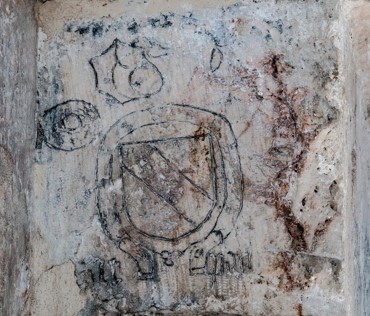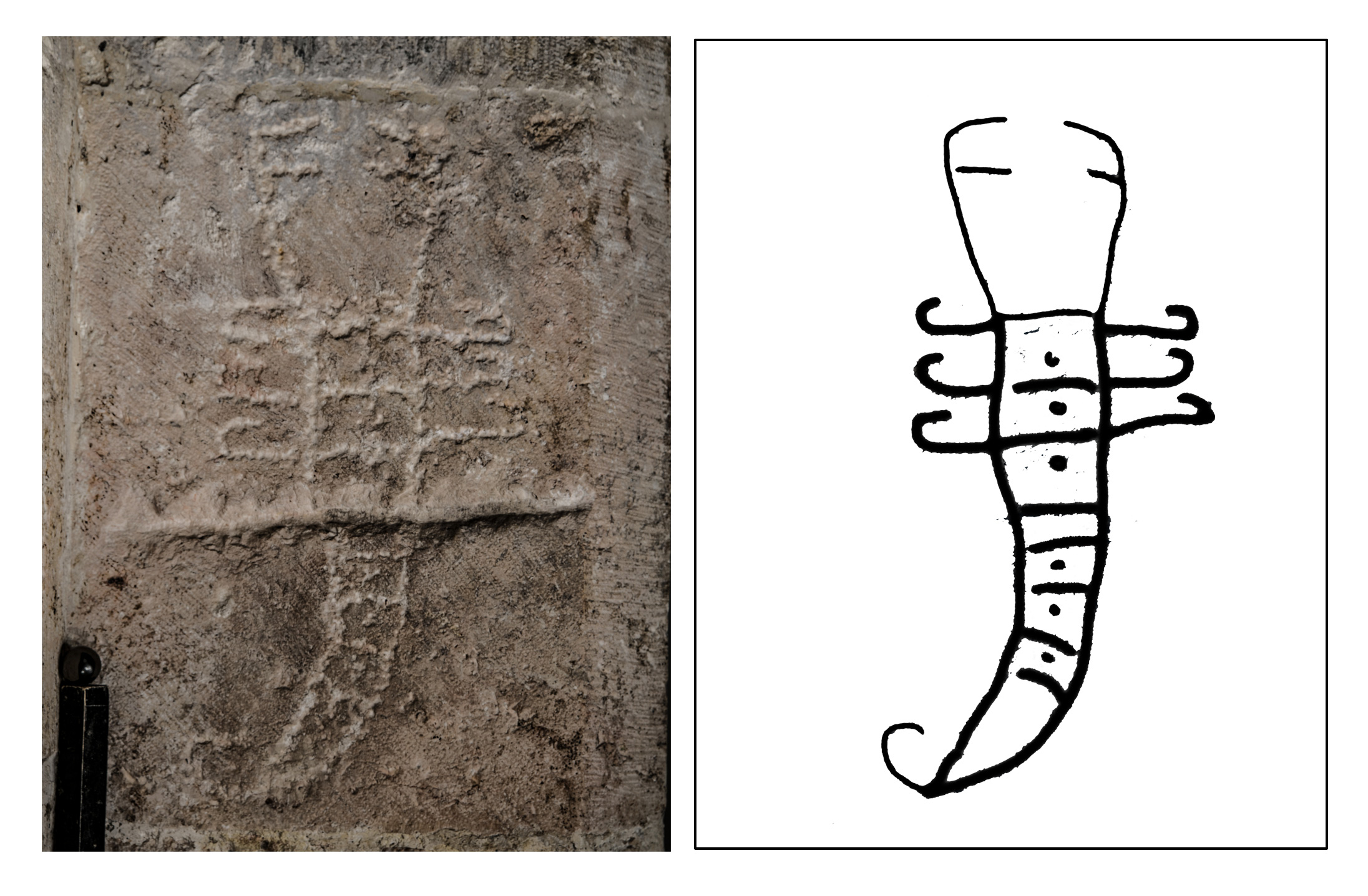A collection of previously unseen inscriptions and images have been revealed on the walls of the Cenacle, a hall built by the Crusaders at the supposed site of Jesus’s last supper. Among the many ancient designs identified are a scorpion, a bagel, and numerous Medieval coats of arms representing elite families from around Europe.
Located atop Mount Zion in Jerusalem, the Cenacle is a rectangular room occupying the upper floor of a building that is said to stand upon the tomb of the biblical King David. Also known as the Room of the Last Supper, the hall is believed to have once hosted the final meal that Jesus shared with his 12 apostles before his crucifixion.
Throughout the Middle Ages, when the Cenacle formed part of a Franciscan monastery, the site was a major pilgrimage destination for Christians from faraway lands. However, the spot was eventually captured by the Muslims and turned into a mosque in 1523, at which point plaster was applied to the walls of the Cenacle, obscuring the graffiti left behind by these pilgrims.
Using a series of digital imaging techniques, the authors of a new study have now revealed 30 inscriptions and nine drawings that were left on the walls of the Cenacle between the late 14th and early 16th centuries. Among these is a coat of arms belonging to the family of the Swabian knight Albert von Altbach, which is now used by the southern German town of Altbach.
Above the emblem, researchers found depictions of a wine goblet, a food platter, and a loaf of bread with a hole in the middle, possibly representing a Jerusalem bagel. According to the study authors, these items may have been drawn in reference to the Last Supper.

The round object with a hole in the middle – just above the coat of arms – may be a bagel.
Image credit: Shai Halevi/Israel Antiquities Authority
Another design portrays a ship, possibly representing one of the many Venetian galleys upon which European pilgrims traveled in order to reach Jerusalem. Other coats of arms found sketched onto the Cenacle’s walls may belong to elites from Austria and the Czech Republic, while one particular inscription appears to reference a woman from Aleppo, thus suggesting that it was not only men who undertook the pilgrimage.
“When put together, the inscriptions provide a unique insight into the geographical origins of the pilgrims,” said study author Ilya Berkovich in a statement. “This was far more diverse than current Western-dominated research perspective led us to believe.”
An Armenian inscription reading “Christmas 1300”, meanwhile, may have been left behind by a soldier who fought for the Armenian King Het’um II at a battle in Syria on December 22, 1299.
Finally, the image of the scorpion is likely to be a reference to a Sufi tradition, in which devotees enter a kind of trance and handle poisonous animals. The study authors therefore speculate that the drawing was made in honor of Sheikh Aḥmad al-ʿAǧamī – nicknamed The Persian – who was instrumental in confiscating the Cenacle from the Franciscans and converting it into a mosque.

The scorpion graffiti may have Sufi connotations.
Image credit: Shai Halevi/Israel Antiquities Authority
“We do not know exactly when the walls of the Cenacle were plastered over, but we assume this was done shortly after the Muslim takeover as it is unlikely that the new owners would leave in plain sight the numerous Christian inscriptions, heraldic symbols and pilgrim writings,” write the researchers.
“Unlike their Christian counterparts, which were mostly written or drawn in coal, all Muslim inscriptions, as well as the image of the scorpion, were cut into the wall surface,” they add. “Apparently this was done as a statement of ownership, ensuring that the Muslim inscriptions would not be erased should the building ever return to Christian hands.”
The study is published in the journal Liber Annuus.
Source Link: Graffiti Of Scorpions And Bagels Discovered At Site Of Jesus’s Last Supper